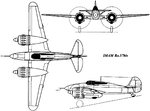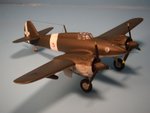Shortround6
Lieutenant General
2700rpm
You are of course, correct. My apologies, I was away from my books at the time at was looking at Wiki. Some engines did use a higher take off rpm that was not used for other flight conditions and I thought the DB 603 might be one of them.


